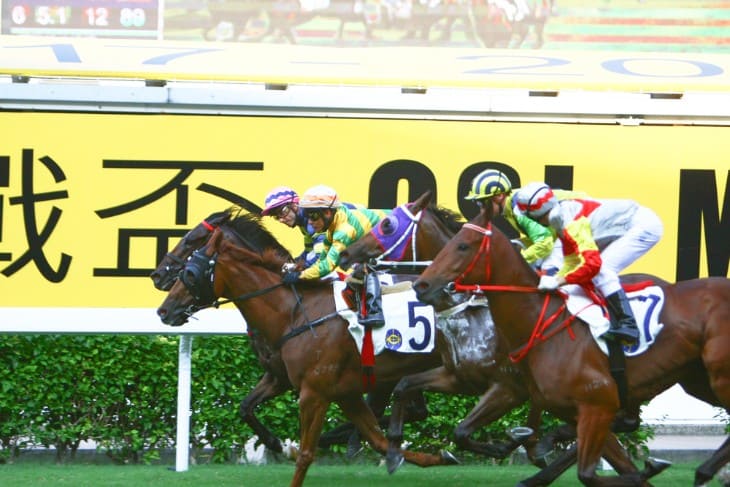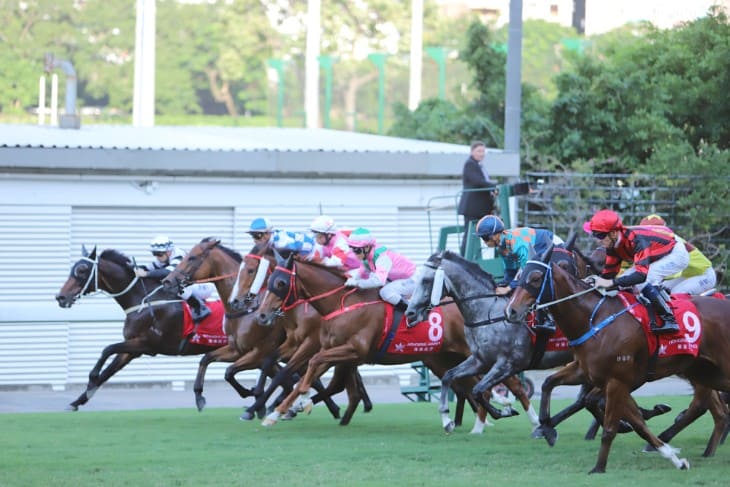- Introduction
- The Life of a Racehorse: Demands and Challenges
- Injuries and Health Concerns in Racehorses
- The Role of Veterinary Care in Rehabilitation
- Equine Physiotherapy: Restoring Strength and Mobility
- Alternative Therapies: Acupuncture and Chiropractic Care
- Training for Second Careers: Adapting Skills
- Equestrian Sports and Beyond: Racehorses in Retirement
- The Role of Sanctuaries and Rescue Organizations
- Challenges and Ethical Considerations in Racehorse Aftercare
- Conclusion: Ensuring Dignity and Quality of Life
Introduction
In the fast-paced world of horse racing, the image of sleek, powerful racehorses thundering down the tracks captures our imagination. These magnificent animals are bred for speed, endurance, and the thrill of competition. However, behind the glamour lies a lesser-known reality - the challenges that racehorses face during and after their careers on the track. In this article, we delve into the world of racehorse rehabilitation and retirement, shedding light on the efforts and considerations involved in ensuring these horses lead healthy and fulfilling lives beyond the racecourse.
The world of horse racing is an intricate tapestry of human skill and equine athleticism. But within this world, there exists a vital yet often overshadowed aspect - the rehabilitation and retirement of racehorses. As we immerse ourselves in the lives of these majestic creatures, we uncover the complexity of their journey from the racetrack to a life of retirement.
The Life of a Racehorse: Demands and Challenges
The life of a racehorse is one of rigorous training, intense competition, and unwavering dedication. From a young age, these horses undergo meticulous training to develop the strength, speed, and stamina needed to excel in races. Early mornings at the stable, grueling workout routines, and a strict diet become the norm as they prepare for the adrenaline-pumping moments on the track.
But this demanding lifestyle comes with its challenges. The high-speed races and intense workouts put immense strain on their bodies, leading to injuries that can potentially alter their careers and well-being. The pressure to perform at their best can lead to stress and burnout, both physically and mentally.
Injuries and Health Concerns in Racehorses
The exhilaration of a race is undeniable, but it's important to recognise the toll it can take on these equine athletes. The relentless pursuit of victory can sometimes lead to injuries that require careful attention. From strained tendons to stress fractures, racehorses are susceptible to a range of ailments that can hinder their performance and overall well-being.
One of the most common injuries in racehorses is tendonitis, caused by the repetitive stress placed on their legs during high-speed sprints. Additionally, joint problems and muscle strains are prevalent due to the intense physical demands placed upon them. These injuries not only affect their ability to race but also raise concerns about their quality of life post-competition.
The Role of Veterinary Care in Rehabilitation
Enter the unsung heroes of the equine world: veterinarians who specialize in racehorse care. These professionals play a pivotal role in the rehabilitation of injured racehorses. Their expertise extends beyond mere diagnosis; they design comprehensive treatment plans that incorporate rest, medication, physical therapy, and even surgical interventions if required.
Veterinarians work closely with trainers, physiotherapists, and other specialists to ensure a holistic approach to rehabilitation. Regular check-ups, imaging scans, and assessments help monitor the progress of recovery. The goal is not just to heal the physical injuries, but also to address the psychological impact that injuries can have on these sensitive animals.
Through the hands of skilled veterinarians, injured racehorses are given a fighting chance to recover and potentially return to the track. However, this isn't always the outcome. In cases where the injuries are too severe or recurring, racehorses may face early retirement. This transition period opens the door to a new set of challenges, ones that involve adapting their training, exploring alternative therapies, and eventually seeking a purpose beyond the racetrack.
For more information: Exploring the Work of a Racehorse Veterinarian.

Equine Physiotherapy: Restoring Strength and Mobility
Just like humans, horses benefit from physical therapy to regain their strength and mobility after an injury. Equine physiotherapy has emerged as a cornerstone in racehorse rehabilitation. Skilled therapists work closely with veterinarians to create tailored exercise programs that aid in the recovery process.
Equine physiotherapy encompasses a range of techniques, from gentle stretches and massages to more advanced exercises designed to target specific muscle groups. Hydrotherapy, where horses exercise in water, is also gaining popularity due to its low-impact nature and effectiveness in building muscle without straining joints.
These therapies not only promote physical healing but also help to re-establish a sense of trust and connection between the horse and their handlers. The bond between a racehorse and their trainer plays a significant role in the rehabilitation journey, providing emotional support that aids in the horse's overall well-being.
Alternative Therapies: Acupuncture and Chiropractic Care
Beyond traditional veterinary care and physiotherapy, racehorses are increasingly benefiting from alternative therapies such as acupuncture and chiropractic care. While these methods might seem unconventional at first glance, they have demonstrated remarkable results in alleviating pain, improving flexibility, and enhancing overall performance.
Acupuncture involves the insertion of fine needles into specific points on the horse's body, aiming to stimulate energy flow and promote natural healing. This ancient practice, rooted in Eastern medicine, has found a place alongside modern veterinary practices to address a range of issues, from musculoskeletal problems to anxiety.
Chiropractic care, on the other hand, focuses on the alignment of the horse's spine and joints. Skilled chiropractors use hands-on adjustments to correct any misalignments that might be affecting the horse's movement and comfort. This approach has been particularly beneficial in horses that have experienced repetitive strain injuries due to the rigorous demands of racing.
For more information: Nutrition and Care for a Racehorse.
Training for Second Careers: Adapting Skills
As racehorses reach the end of their competitive careers, a new chapter begins - one that requires a shift in perspective and training. Transitioning from the high-octane world of racing to a calmer, more varied second career can be both exciting and challenging for these equine athletes.
Fortunately, the skills acquired on the racetrack can be remarkably adaptable. Many retired racehorses find second careers in equestrian sports such as showjumping, dressage, and eventing. Their agility, speed, and discipline make them excellent candidates for these disciplines. With proper retraining and a patient approach, these horses can excel in new arenas, proving their versatility and carving out fulfilling lives beyond the track.
Retraining involves introducing the horse to new routines, riders, and environments. It's a gradual process that requires patience, understanding, and an appreciation for the horse's individual temperament and preferences. Trainers play a pivotal role in shaping this transition, using their expertise to build trust and confidence in the horse's new direction.
Equestrian Sports and Beyond: Racehorses in Retirement
Equestrian sports offer retired racehorses a chance to showcase their athleticism and grace in a different light. However, not all horses transition into competitive sports. Some find joy in leisurely hacking, trail riding, or simply enjoying their days in the pasture. These retired racehorses become ambassadors of their own stories, serving as reminders of the dedication and effort that go into their training and care.
Beyond the realms of sports, there are also specialised sanctuaries and rescue organizations dedicated to providing a safe and comfortable retirement for racehorses. These sanctuaries offer a peaceful haven for horses that may have physical limitations or require ongoing medical attention. They ensure that every horse, regardless of their history, can live out their days in dignity and comfort.
For more information: The Role of the British Equestrian Federation in Horse Racing.
The Role of Sanctuaries and Rescue Organizations
In the tapestry of racehorse rehabilitation and retirement, sanctuaries and rescue organizations weave an essential thread. These organizations provide a lifeline to horses that might otherwise face uncertain fates. Whether due to injuries, age, or changing circumstances, some racehorses need a supportive environment that caters to their unique needs.
Sanctuaries offer a space where retired racehorses can find solace, companionship, and specialized care. With experienced staff and veterinary support, these sanctuaries focus on giving horses the best possible quality of life. From spacious pastures to tailored feeding plans, every aspect of a horse's physical and emotional well-being is meticulously addressed.
Rescue organizations also play a crucial role in the racehorse landscape. They step in to rehome, rehabilitate, or retrain horses that have been neglected or mistreated. These efforts not only give horses a second chance at life but also serve as a reminder of the responsibility that comes with horse ownership.

Challenges and Ethical Considerations in Racehorse Aftercare
The journey from racehorse to retirement isn't without its challenges. One of the key ethical considerations is the responsibility that trainers, owners, and the racing industry as a whole have towards these horses. Ensuring that retired racehorses are well-cared for, whether they continue to work or enjoy their golden years in a pasture, demands thoughtful planning and dedicated resources.
Another challenge lies in the question of what constitutes a dignified retirement. Determining when a racehorse's competitive career should end and how they should spend their retirement is a decision that involves a multitude of factors. Striking the balance between their physical capabilities, mental well-being, and individual preferences is a complex task.
Furthermore, the growing awareness of animal welfare and the changing attitudes towards horse racing are reshaping the conversation around racehorse aftercare. This evolution prompts the industry to adopt more comprehensive measures to ensure that every horse, regardless of their racing success, is afforded a safe and comfortable retirement.
Conclusion: Ensuring Dignity and Quality of Life
And so, our journey through the realm of racehorse rehabilitation and retirement comes to an end. What we've discovered is a world rich with complexity, compassion, and dedication. Beyond the thunderous applause of the racetrack, beyond the moments frozen in photographs, lies a deeper narrative - one of resilience, adaptation, and the unwavering bond between humans and horses.
From the challenges that racehorses face in their demanding careers to the injuries that require careful rehabilitation, we've peeled back the layers of their journey. We've seen how veterinary care, equine physiotherapy, and alternative therapies work hand in hand to restore their strength and mobility. Acupuncture and chiropractic care, once considered unconventional, have found their place in the world of equine wellness.
Transitioning to second careers and exploring the realm of equestrian sports, retired racehorses showcase their versatility and redefine their purpose. Yet, not all roads lead to competitive arenas; some horses find joy in quiet pastures, offering a lesson in the simplicity of contentment.








